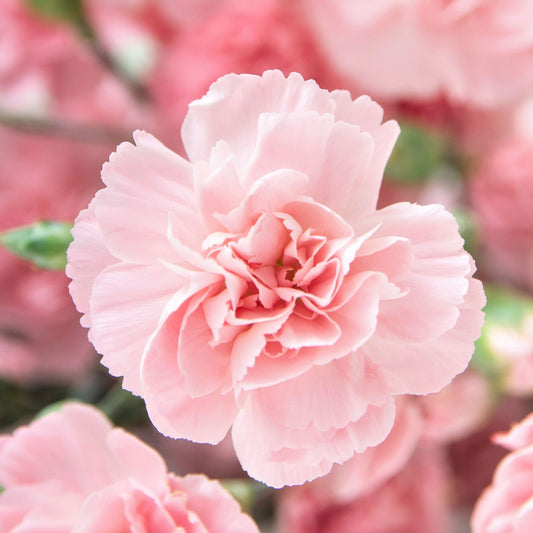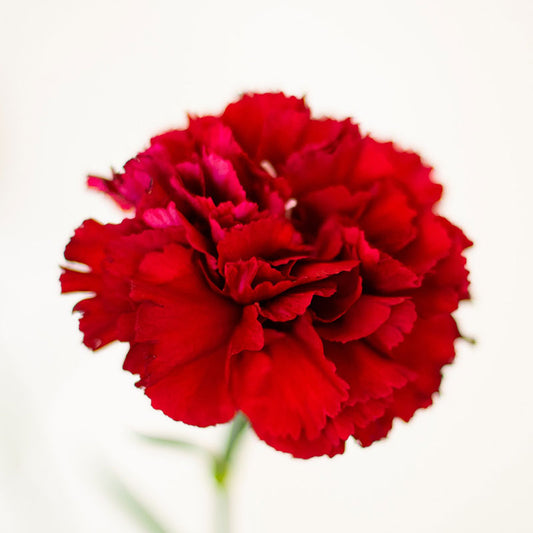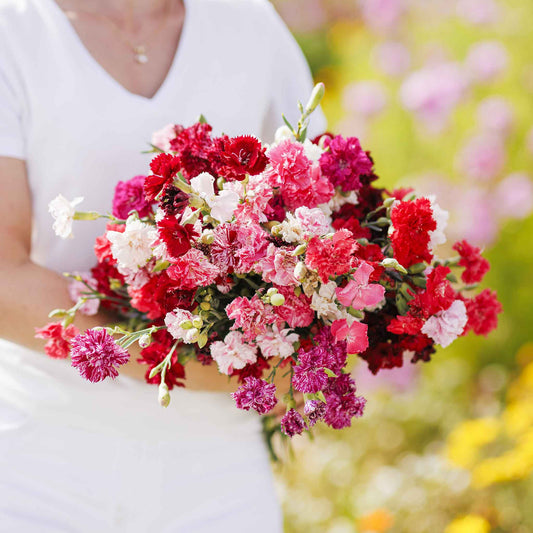-
main-collection-product-grid

Carnation Seeds - La France
A blush-colored heirloom with the sweetest fragrance, perfect for your ValentineCarnation Seeds - La France
A blush-colored heirloom with the sweetest fragrance, perfect for your ValentineRegular price As Low As $5.99Regular priceUnit price per -
main-collection-product-grid

Carnation Seeds - Jeanne Dionis
White as snow and as breathtaking as the first frosty morningCarnation Seeds - Jeanne Dionis
White as snow and as breathtaking as the first frosty morningRegular price As Low As $5.99Regular priceUnit price per -
main-collection-product-grid

Carnation Seeds - Picotee Mix
Speckled blooms that belong in an old-fashioned candy storeCarnation Seeds - Picotee Mix
Speckled blooms that belong in an old-fashioned candy storeRegular price As Low As $5.99Regular priceUnit price per -
main-collection-product-grid

Carnation Seeds - Chabaud Mix
This rainbow mix of ruffled flowers have a clove-like scent are actually edibleCarnation Seeds - Chabaud Mix
This rainbow mix of ruffled flowers have a clove-like scent are actually edibleRegular price As Low As $5.99Regular priceUnit price per -
main-collection-product-grid

Carnation Seeds - Grenadin King of Blacks
These wine-colored blooms are the darkest of all carnationsCarnation Seeds - Grenadin King of Blacks
These wine-colored blooms are the darkest of all carnationsRegular price As Low As $5.99Regular priceUnit price per -
main-collection-product-grid

Carnation Seeds - Grenadin Double Mix
Perfect for an edible flower garden, these fully flowered blooms open in pairsCarnation Seeds - Grenadin Double Mix
Perfect for an edible flower garden, these fully flowered blooms open in pairsRegular price As Low As $5.49Regular priceUnit price per -
main-collection-product-grid

Carnation Seeds - Etincellant
This vermillion carnation defines romance and belongs on a lapelCarnation Seeds - Etincellant
This vermillion carnation defines romance and belongs on a lapelRegular price As Low As $5.99Regular priceUnit price per -
main-collection-product-grid

Carnation Seeds - Enfant de Nice Mix
A heirloom mix of fragrant blooms is a garden mainstayCarnation Seeds - Enfant de Nice Mix
A heirloom mix of fragrant blooms is a garden mainstayRegular price As Low As $5.99Regular priceUnit price per -
main-collection-product-grid

Carnation Seeds - Marie Chabaud
Small lemon-yellow blooms are the first to flower in springCarnation Seeds - Marie Chabaud
Small lemon-yellow blooms are the first to flower in springRegular price As Low As $5.99Regular priceUnit price per -
main-collection-product-grid

Carnation Seeds - Orange Sherbet
These orange blooms are edible, but they don't taste citrusyCarnation Seeds - Orange Sherbet
These orange blooms are edible, but they don't taste citrusyRegular price As Low As $5.99Regular priceUnit price per
Planting the best carnation seeds
- 10 carnation seed varieties
- Great for borders, beds, and cut flowers
- Thrive in full sun conditions
- Offer stems up to 24 inches long
carnations for your cut flower garden
Carnations are among the most popular commercial cut flowers and are native to the Mediterranean area. With a beautifully sweet, peppery scent, carnation seeds will produce several diminutive blooms per stem, which are perfect for cutting. Eden Brothers' Grenadin Double Carnation Seed Mix, Marie Chabaud Carnation Seeds, and Orange Sherbet Carnation Seeds are just a few of the many varieties that we offer to bring this beauty out from the florist doldrums and into your cutting garden. Fun carnation facts: the carnation flower was deemed the official flower of Mother's Day in the United States in the early 1900's, and it's known as the state flower of Ohio. Tell your friends about carnations!
how and when to plant carnations
Carnations thrive in full sun in average, evenly moist, well-drained soils. Start seeds indoors six to eight weeks before your last frost or directly sow into your garden one to two weeks before. If starting indoors, sow two to three seeds per pot or cell and lightly cover them with soil, about 1/4 inch. Keep seedlings moist. If direct sowing, be sure to space plants about eight to ten inches apart. Germination should occur within two weeks if temperatures are 65 to 70°F. If in containers, move seeds to a sunny, cool place after germination. Harden off seedlings before moving them outdoors.
These blooms do not need a lot of water, except in hot, summer-like conditions. Soaker hoses are best. Do not over water as this will cause yellow foliage. Deadhead regularly to prolong flowering and a compact habit. Divide clumps every other spring, or plant new ones to maintain vigor.
other carnation uses and benefits
In addition to their aesthetic purposes, carnations also offer culinary and medicinal uses. While some people use the petals as an elevated garnish, others sprinkle the petals over sweet and savory preparations to add floral tones to their meal. Carnations are also used in tea to reduce anxiety, stress, and nausea. There are endless ways of preparing and accenting meals with carnation petals.
For more information about planting, growing, and caring for carnation flower seed, see the Carnation Seeds Planting Guide.









